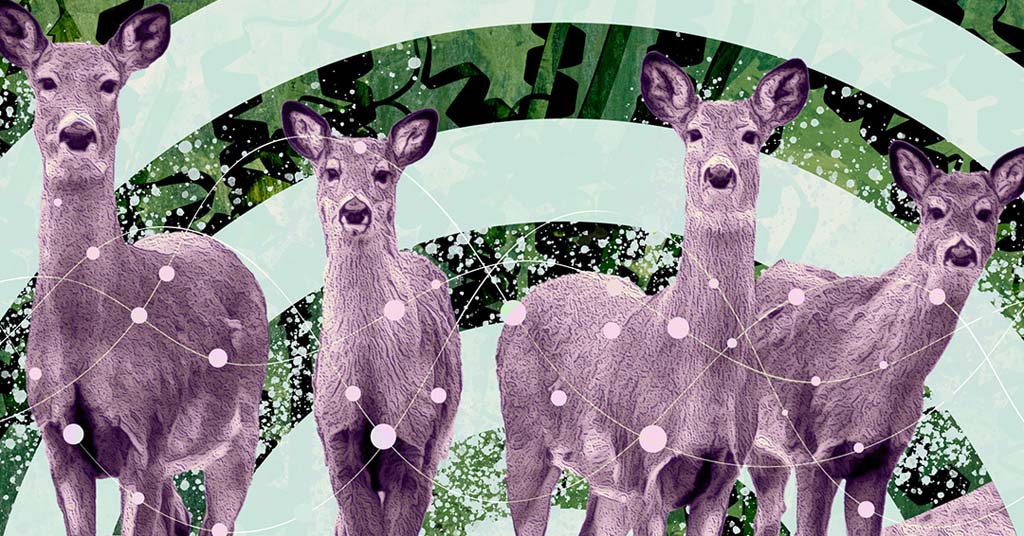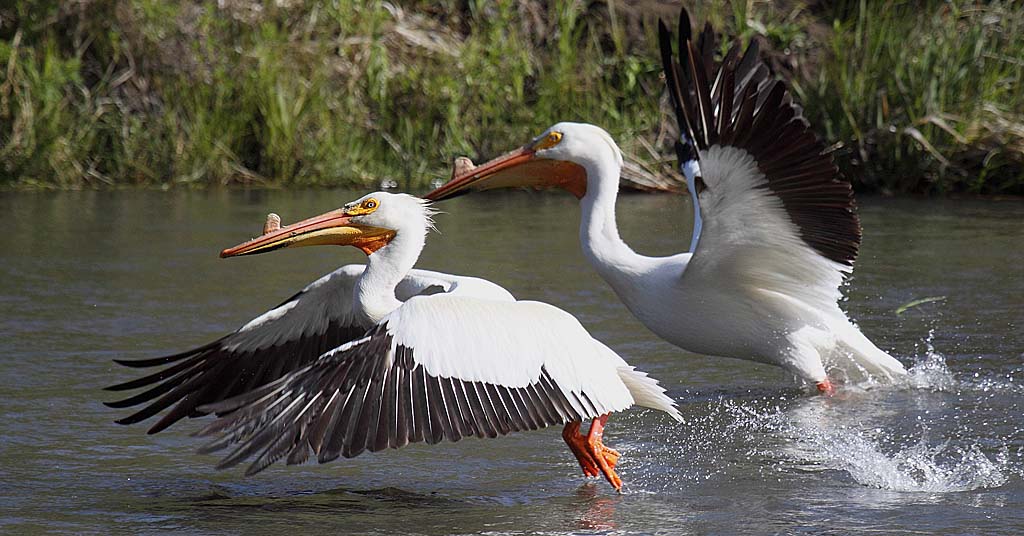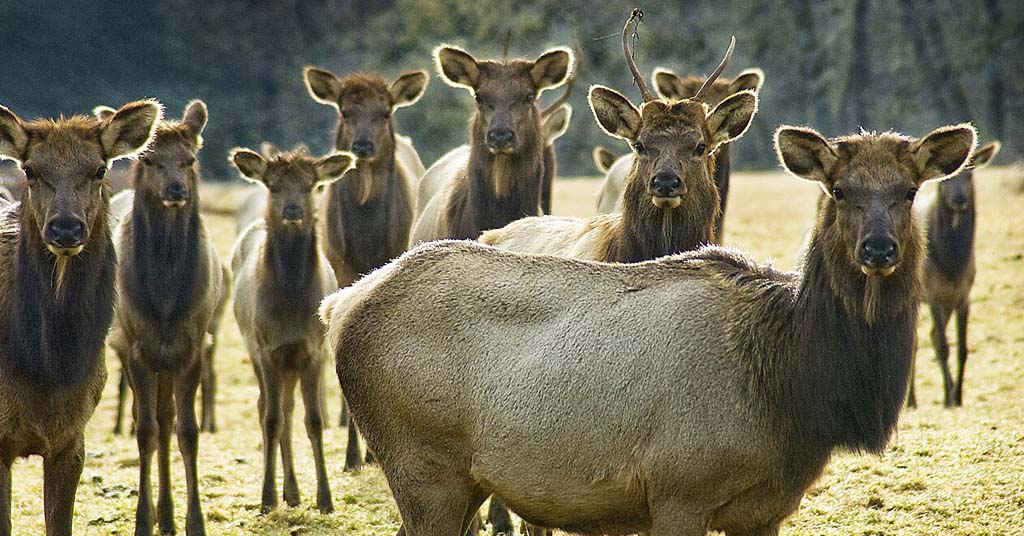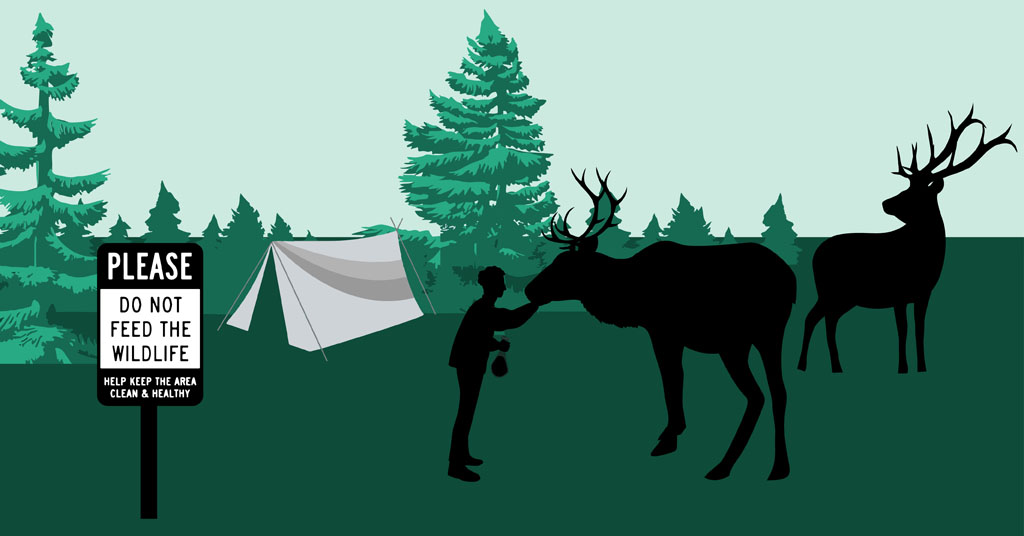In Oregon, a program started in the 1970s to stop elk from ravaging ranchers’ haystacks has turned into a winter tradition—for elk and people who love to see them
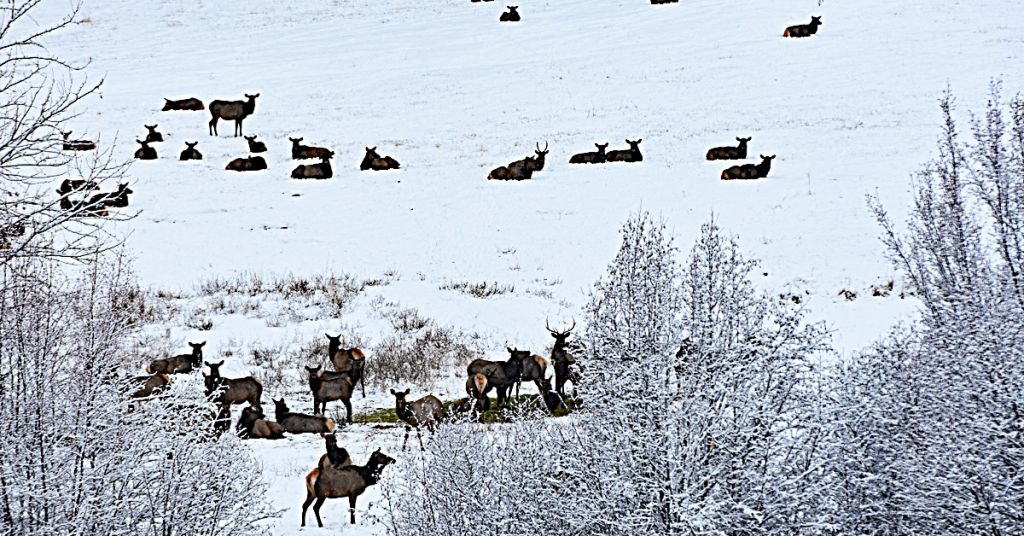
Cold call: Each winter, alfalfa hay draws elk to the Elkhorn Wildlife Area in northeastern Oregon. Image: Baker City Herald
By Jayson Jacoby/Baker City Herald. December 22, 2021. Elk don’t need calendars. Dan Marvin is convinced of that.
He can’t vouch for the animals’ ability to recognize, say, Christmas, Independence Day or any other holiday observed by humans.
But elk certainly know when December arrives.
Some elk, anyway.
Marvin can attest only to the chronological acumen of the elk that congregate each year at the Elkhorn Wildlife Area.
That’s the series of 10 elk-feeding stations in northeastern Oregon, ranging from Old Auburn Lane in the south to Shaw Mountain in Union County, operated by the Oregon Department of Fish and Wildlife (ODFW).
Marvin is starting his fourth winter as the Elkhorn Wildlife Area manager.
The publicly owned portions of the Wildlife Area (some stations are on private land for which ODFW has leases) are closed to public entry on Dec. 1, and remain closed through April 10.
MORE: Elk hoof disease continues to afflict elk populations
Marvin says elk start to show up at some of the feed sites—most notably the meadow along Anthony Creek, west of North Powder—on Dec. 1.
The animals stroll into the meadow even in years, such as the current one, when the fall has been mild, snow is scarce and the elk have no particular need for handouts of alfalfa hay.
“These elk, they know where that feed is,” says Marvin. “They have a phenomenal memory of where they’ve wintered in the past, and they can migrate for many miles overnight to be here at the feed site the next morning.”
Winter meals
Marvin and his crew distribute several hundred tons of alfalfa to elk each winter not because the animals wouldn’t survive without the supplemental feed.
Elk are tough and hardy, capable of digging through deep snow to get at the meager winter forage.
Even a nasty winter, the sort that can kill hundreds of mule deer across northeastern Oregon, typically takes only a minor toll on elk.
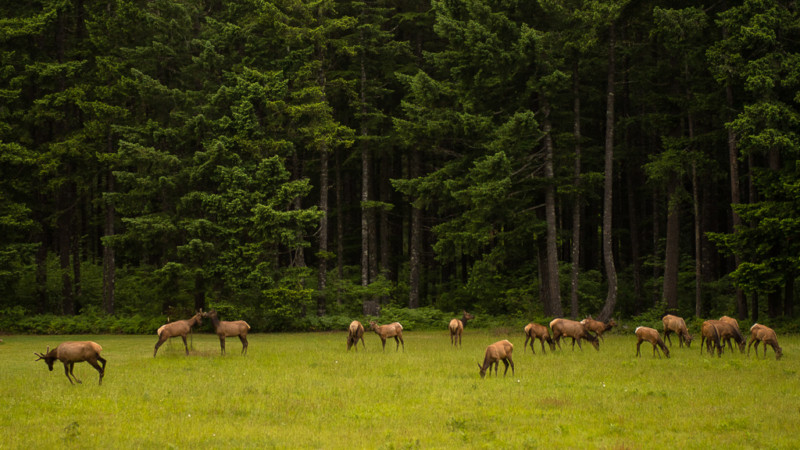
Group decision: Elk are highly sociable, preferring to congregate in herds. Photo: Jurgenhessphotography.com
ODFW started the Elkhorn Wildlife Area in 1971 for a very different purpose—to stop elk from marauding cattle ranchers’ haystacks in the Baker, North Powder and Bowen valleys.
The idea, which has proven largely effective over the past half century, is to set up feeding stations where daily distributions of alfalfa will, in effect, intercept the elk, satisfying their hunger and discouraging them from migrating into the valleys.
During the ensuing decades, Marvin says, the elk have become habituated to these seasonal offerings, their instincts so keen that their arrival, as the calendar turns from November to December, is reliable.
“The cows every year bring their calves here, and they learn, and then they bring their calves,” says Marvin.
1,000 elk
ODFW doesn’t start bucking hay bales here before Dec. 1, early snow or no.
The reason is that the Elkhorn Wildlife Area remains open to the public, including hunters, through Nov. 30. ODFW doesn’t want to, in effect, set up bait stations where elk would congregate.
MORE: Caribou comeback? Canada, Kalispel Tribe keep slim hopes alive
This year, about 150 to 170 elk arrived at the Anthony Creek feeding site Dec. 1, and they’ve been showing up daily since.
Elk numbers have been lower at the other sites.
That’s typical, according to Marvin, even though the Wildlife Area crew set out hay at each of the sites on Dec. 1.
“Peak numbers are usually in January when it’s the coldest and the snow tends to get the deepest,” he says.
During mid-winter, the Wildlife Area crew feeds more than 1,000 elk, including about 500 at the Old Auburn Lane site and 250 or so at Anthony Creek.
Where to see elk
The Auburn and Anthony Creek sites are the two publicly accessible properties with maintained roads where people can park and watch the big herds of elk, which usually include multiple mature, branch-antlered bulls.
To get to the Auburn site, drive south of Baker City on Highway 7 for about seven miles, and turn right on Old Auburn Lane. Follow this gravel road (maintained in winter) for about 3.5 miles where a sign marks the Wildlife Area. The elk are fed on a knoll south of the road.
To reach the Anthony Creek site, from North Powder drive west on River Lane for about 8.5 miles. The elk are fed in a meadow south of the road. You can also reach River Lane via Haines and the Anthony Lakes Highway.




